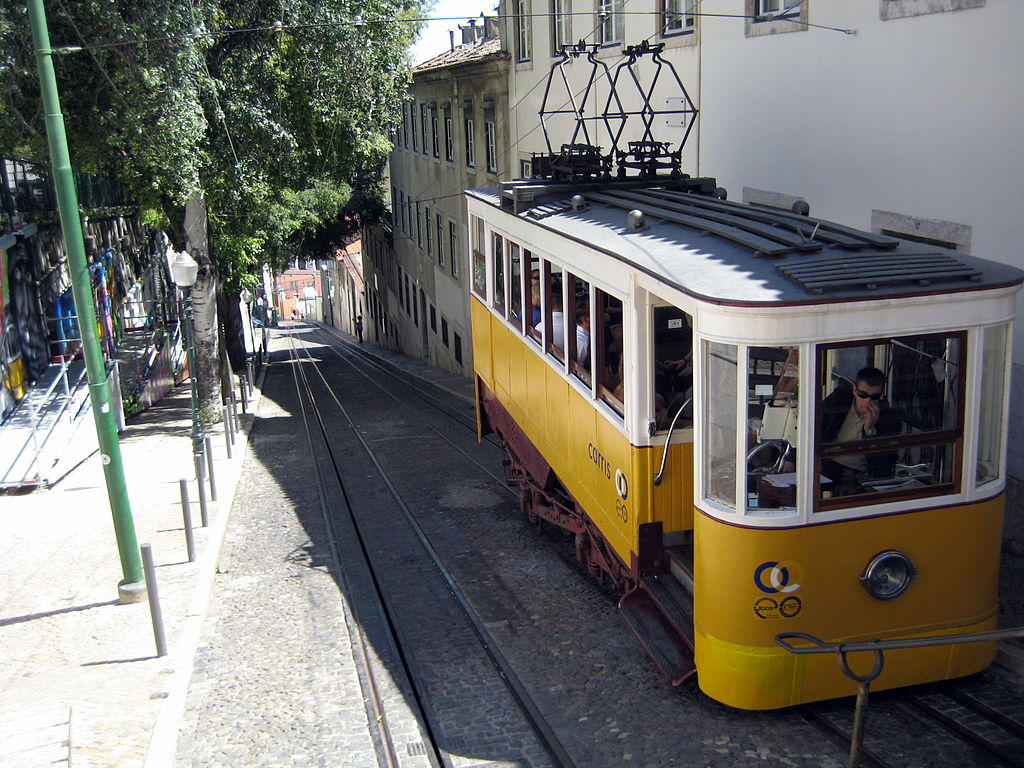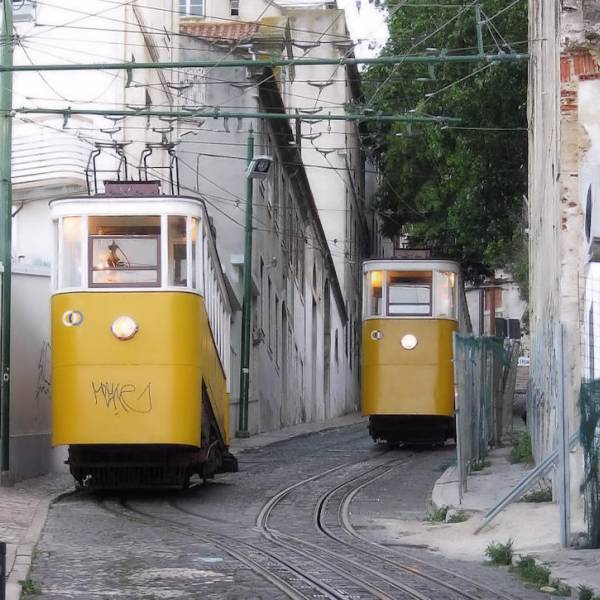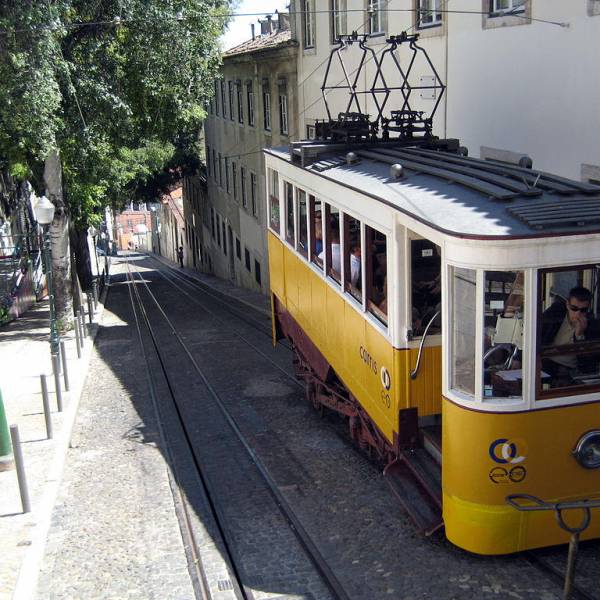Initially led by the Nova Companhia dos Ascensores Mecânicos de Lisboa, the construction of the funicular gained momentum under the guidance of engineer Raoul Mesnier du Ponsard, who took over the concession in 1882. The final lift was officially inaugurated on October 24, 1885, featuring a unique water-powered counterweight system. The innovative design allowed for efficient transportation up and down the slope, providing a convenient and comfortable experience for passengers.
Over time, advancements in technology led to the replacement of the water-powered mechanism with a more modern steam-powered system by 1886. This transition improved the overall efficiency and reliability of the funicular, ensuring smooth and reliable operations for the growing number of passengers who relied on this mode of transportation.
The Glória Funicular boasted an impressive design, consisting of two cars with exterior wheels connected by a central cable. The cars featured two floors, accommodating passengers in comfortable bunks. The lower level faced the interior, while the upper level provided a back-to-back seating arrangement. This layout allowed for optimal passenger capacity while maintaining a sense of comfort and convenience during the ascent or descent.
In 1912, the Nova Companhia dos Ascensores Mecânicos de Lisboa signed a contract with the Municipal Council of Lisbon, marking an important milestone in the funicular's history. This agreement allowed for the electrification of the lines, ushering in a new era of enhanced efficiency and environmental sustainability. Between 1914 and 1915, extensive repairs and installations took place to enable the electrification, ensuring the funicular's continued operation and popularity among the city's residents and visitors.
In 1926, the Nova Companhia dos Ascensores Mecânicos de Lisboa underwent a significant change when it was dissolved, and the ownership of the Glória Funicular was transferred to the Companhia Carris. As part of this transition, a shelter for passengers was constructed in 1927 along the Praça dos Restauradores. However, the shelter became a subject of contention and was eventually demolished in 1934, altering the aesthetic landscape of the area.
Recognizing the historical and cultural significance of the Glória Funicular, efforts were made to preserve its heritage for future generations. On August 1, 1995, Carris presented a proposal to classify the funicular as a heritage site, aiming to safeguard its unique character and maintain its historical importance within the city. Subsequently, the IPPAR consultative council supported the proposal, leading to the official classification of the Glória Funicular as a National Monument on March 11, 1997.
Lisbon.vip Recommends
Today, the Glória Funicular stands as a cherished piece of Lisbon's history, attracting both locals and tourists eager to experience its nostalgic charm. The ascent or descent on this historic tram offers a unique perspective on the city, as passengers are treated to breathtaking views of Lisbon's picturesque streets, colorful buildings, and vibrant neighborhoods.
Beyond its practical purpose as a mode of transport, the Glória Funicular serves as a symbol of Lisbon's resilience and ability to adapt to the changing times while preserving its architectural and cultural heritage. As passengers step aboard this vintage tram, they embark on a journey that transcends time, connecting the present with the past and providing a glimpse into the ingenuity and craftsmanship of a bygone era.
Whether one seeks to marvel at the engineering marvels of the past, soak in the panoramic vistas, or simply embrace the nostalgia of a bygone era, the Glória Funicular invites all to experience a truly unique and enchanting adventure through Lisbon's captivating history.





